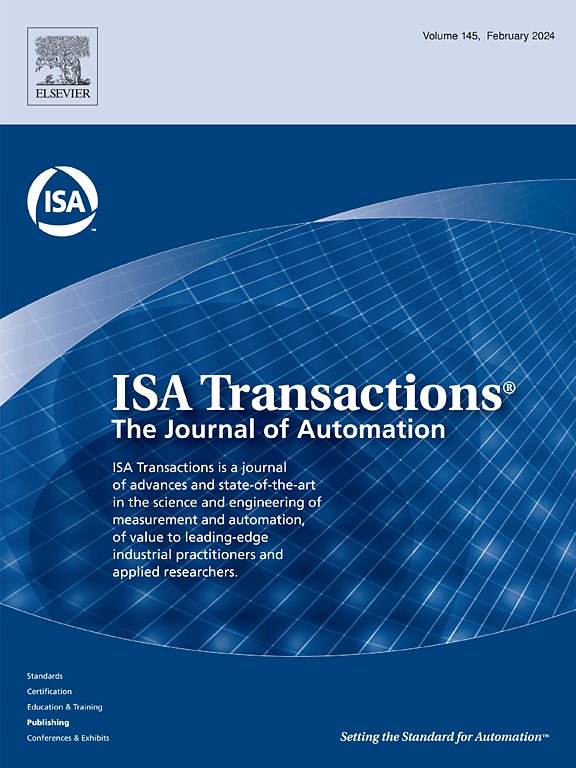Multiscale dynamically parallel shrinkage network for fault diagnosis of aviation hydraulic pump and its generalizable applications
IF 6.3
2区 计算机科学
Q1 AUTOMATION & CONTROL SYSTEMS
引用次数: 0
Abstract
Aiming to address the multiscale characteristics and noise corruption problems in the vibration signals of aviation hydraulic pumps, this article develops a novel Multiscale Dynamically Parallel Shrinkage Network (MDPSN) to learn complementary and rich fault-related multiscale features, with the ultimate goal of yielding higher diagnostic accuracy. One significant property is the development of a novel dynamically parallel shrinking module (DPSM) that adaptively generates independent soft thresholds for different scales, effectively shrinking noise-related features to zeros. On one hand, DPSM aggregates and interacts with features at all scales to construct a global feature representation containing richer fault-related information, which is served as the foundation for soft thresholding generation, significantly improving the accuracy and rationality of the generated thresholds. On the other hand, DPSM can adaptively generate individual soft threshold for each scale, allowing each scale to use an independent threshold tailored to its own characteristic to eliminate noise-related information. This avoids the issues of over-denoising or under-denoising caused by the uniform application of thresholds across all scales. Finally, the effectiveness of MDPSN is validated by a series of experiment comparisons on an aviation hydraulic pump dataset and two bearing datasets with various types of noise. The experimental results demonstrate that MDPSN achieves superior diagnostic accuracy compared to five other comparison methods.
用于航空液压泵故障诊断的多尺度动态并行收缩网络及其可推广应用。
为了解决航空液压泵振动信号中的多尺度特征和噪声破坏问题,本文开发了一种新型多尺度动态并行收缩网络(MDPSN),以学习互补和丰富的故障相关多尺度特征,最终达到提高诊断准确性的目的。其中一个重要特性是开发了一个新颖的动态并行收缩模块(DPSM),可自适应地为不同尺度生成独立的软阈值,从而有效地将噪声相关特征收缩为零。一方面,DPSM 会聚合所有尺度的特征并与之交互,以构建包含更丰富故障相关信息的全局特征表示,作为软阈值生成的基础,从而显著提高生成阈值的准确性和合理性。另一方面,DPSM 可以自适应地为每个尺度生成单独的软阈值,允许每个尺度使用适合自身特征的独立阈值来消除与噪声相关的信息。这就避免了在所有尺度上统一应用阈值所导致的过度噪声化或噪声不足问题。最后,通过对航空液压泵数据集和两个含有各种噪声的轴承数据集进行一系列实验比较,验证了 MDPSN 的有效性。实验结果表明,与其他五种比较方法相比,MDPSN 实现了更高的诊断准确性。
本文章由计算机程序翻译,如有差异,请以英文原文为准。
求助全文
约1分钟内获得全文
求助全文
来源期刊

ISA transactions
工程技术-工程:综合
CiteScore
11.70
自引率
12.30%
发文量
824
审稿时长
4.4 months
期刊介绍:
ISA Transactions serves as a platform for showcasing advancements in measurement and automation, catering to both industrial practitioners and applied researchers. It covers a wide array of topics within measurement, including sensors, signal processing, data analysis, and fault detection, supported by techniques such as artificial intelligence and communication systems. Automation topics encompass control strategies, modelling, system reliability, and maintenance, alongside optimization and human-machine interaction. The journal targets research and development professionals in control systems, process instrumentation, and automation from academia and industry.
 求助内容:
求助内容: 应助结果提醒方式:
应助结果提醒方式:


